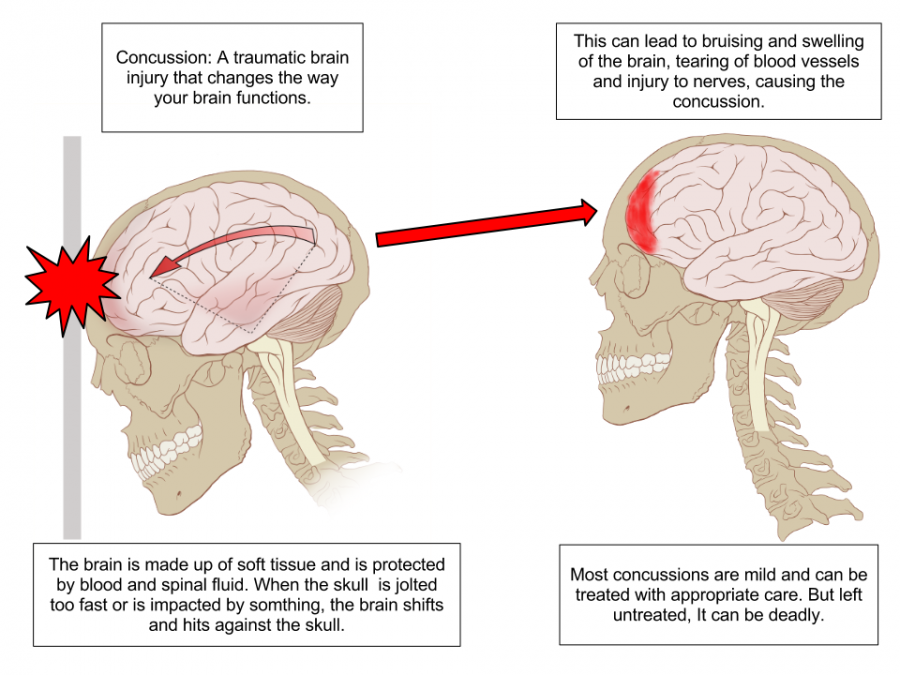What makes concussions so dangerous?
December 24, 2015
Dizziness, sensitivity, mood swings, it’s probably just another headache, right? Wrong! While sports are fun, the same can’t be said about head injuries. They can permanently affect your future and your daily life.
Brain injuries aren’t like broken arms or sprained ankles. They don’t heal within a couple of weeks or months. Nope. You have to live with them for the rest of your life.

This scan locates the bleeding of brain with the white arrows.
While the dizziness and mood swings can certainly take a toll on someone, there is one factor that is much worse. When the brain swells, it can prove to be fatal. There have been a number of high school athletes who have died as a result of swelling in the brain.
The scenario plays out over and over on football fields across America. It’s game night and running back Joe Football runs for 12 yards, picking up a first down. He passes the first down marker, and “clack!” the middle linebacker cracks him helmet to helmet. The crowd cheers, and the team gets in scoring range and wins the big game. Unfortunately, Joe’s victory is only temporary. His brain swells…and he dies.
According to the Southwest Athletic Trainers Association, “There were 120 sports-related deaths of young athletes in 2008-2009; 50 in 2010; and 40 in 2011.”
Usually people don’t feel the effects right away. In a game, a concussion is not the first thing on an athlete’s mind. They might not report to a trainer to get checked out, and they might return to play because they feel fine at the time, but this is a mistake.
SWATA reports that “50% of “second impact syndrome” incidents – brain injury caused from a premature return to activity after suffering initial injury (concussion) – result in death.” Despite this, SWATA found that “15.8% of football players who sustain a concussion severe enough to cause loss of consciousness return to play the same day.”
Girls are especially at risk. Female soccer players get 40 percent more concussions than males, and female basketball players suffer 240 percent more concussions than males.

Photo explaining what happens during a concussion.